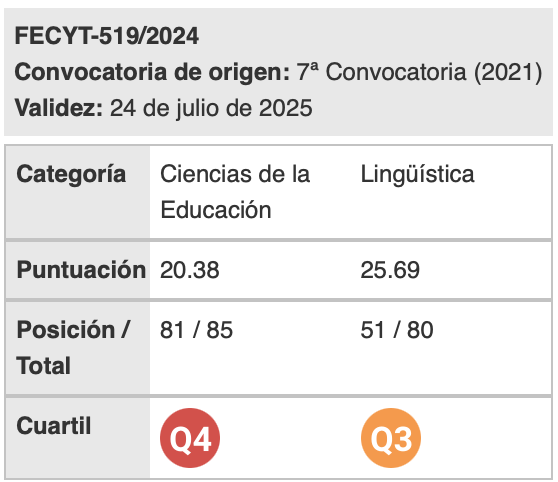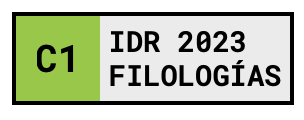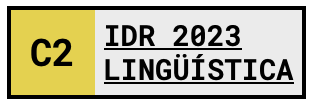Teaching and learning science in context
Keywords:
CLIL, bilingual education, ICT, motivationAbstract
The aim of this study is the design of the teaching and learning process of science activities on the circulatory system. Due to the expansion of the EU and the diversity of languages in Europe, the European Commission has been promoting a multilingual and multicultural Europe. For this reason, there is a greater need for the development of communicative competence in Primary Education, and bilingual education is an ideal way to promote this goal.
Following CLIL approach, Content and Language Integrated Learning, English as a Second Language is used as a medium to teach subject matter content. CLIL consists of a variety of methods used to integrate content and language and it serves to develop knowledge of the subject as well as to improve students’ competency in English. Through innovative methods, it allows the recognition of meaning and the use of meaningful language in a particular context. Applying CLIL involved the preparation of specific materials for 49 Spanish students divided in two groups in year 6 of Primary Education in Spain.
The involvement of students in the learning process and their interaction is an essential aspect of this study. This involvement was even enhanced by means
of the use of ICT (Information and Communication Technologies) in the classroom and by the students’ active participation in the activities carried out along the process, which fostered motivation, a relaxed setting, teamwork and collaboration in a meaningful context. The materials and suggestions presented here also aim to be a support for bilingual teachers by providing a selection of activities and educational resources for their professional development.
Downloads
References
Cummins, J. (1984). Bilingualism and special education: Issues in assessment and pedagogy. Clevedon: Multilingual Matters.
Hymes, D. H. (1972). “On communicative competence”. In J. B. Pride and J. Holmes (Eds.), Sociolinguistics. Selected Readings. Harmondsworth: Penguin.
Krashen, S. D. (1981). Principles and practice in second language acquisition. English language teaching series. London: Prentice-Hall International.
Marsh, D. (1994). Bilingual education & content and language integrated learning. International association for cross-cultural communication, language teaching in themember states of the European Union (Lingua). Paris: University of Sorbonne.
Marsh, D. and G. Langé (Eds.) (2000). Using languages to learn and learning to use languages. Finland: University of Jyväskylä.
MEC (2006). “Orientaciones para el desarrollo del currículo integrado hispano-británico en educación primaria. Convenio M.E.C./British Council”. Madrid: Secretaría General Técnica. Centro de publicaciones del Ministerio de Educación y Ciencia.
Navés, T. and C. Muñoz (1999). “CLIL experiencies in Spain”. In Marsh, D and G. Langé (Eds.), Implementing content and language integrated learning. Finland: Jyväskylä.
Navés, T. and C. Muñoz (2000). “Usar las lenguas para aprender y aprender a usar las lenguas extranjeras. Una introducción a AICLE para madres, padres y jóvenes”. In Marsh, D. and G. Langé (Eds.), Using Languages to Learn and Learning to Use Languages. Finland: UniCOM, University of Jyväskylä on behalf of TIE-CLIL. Available on http://www.ub.es/filoan/CLIL/padres.pdf (accessed on April 20, 2013).
Nunan, D. (1988). The learner-centred curriculum. Cambridge: Cambridge University Press.
Sanmartí, N. (2007). “Hablar, leer y escribir para aprender ciencia”. In La competencia en comunicación lingüística en las áreas del currículo. Aulas de Verano. MEC.
Downloads
Published
How to Cite
Issue
Section
License
Authors who publish with this journal agree to the following terms:
- Authors retain copyright and grant the journal right of first publication with the work simultaneously licensed under a Creative Commons Attribution License that allows others to share the work with an acknowledgement of the work's authorship and initial publication in this journal.
- Authors are able to enter into separate, additional contractual arrangements for the non-exclusive distribution of the journal's published version of the work (e.g., post it to an institutional repository or publish it in a book), with an acknowledgement of its initial publication in this journal.
- Authors are permitted and encouraged to post their work online (e.g., in institutional repositories or on their website) prior to and during the submission process, as it can lead to productive exchanges, as well as earlier and greater citation of published work (See The Effect of Open Access).

Revista de Lenguas para fines específicos is licensed under a Creative Commons Reconocimiento-NoComercial-SinObraDerivada 4.0 Internacional License.
























